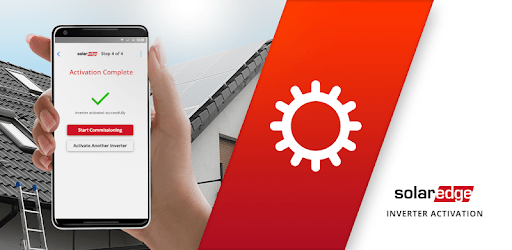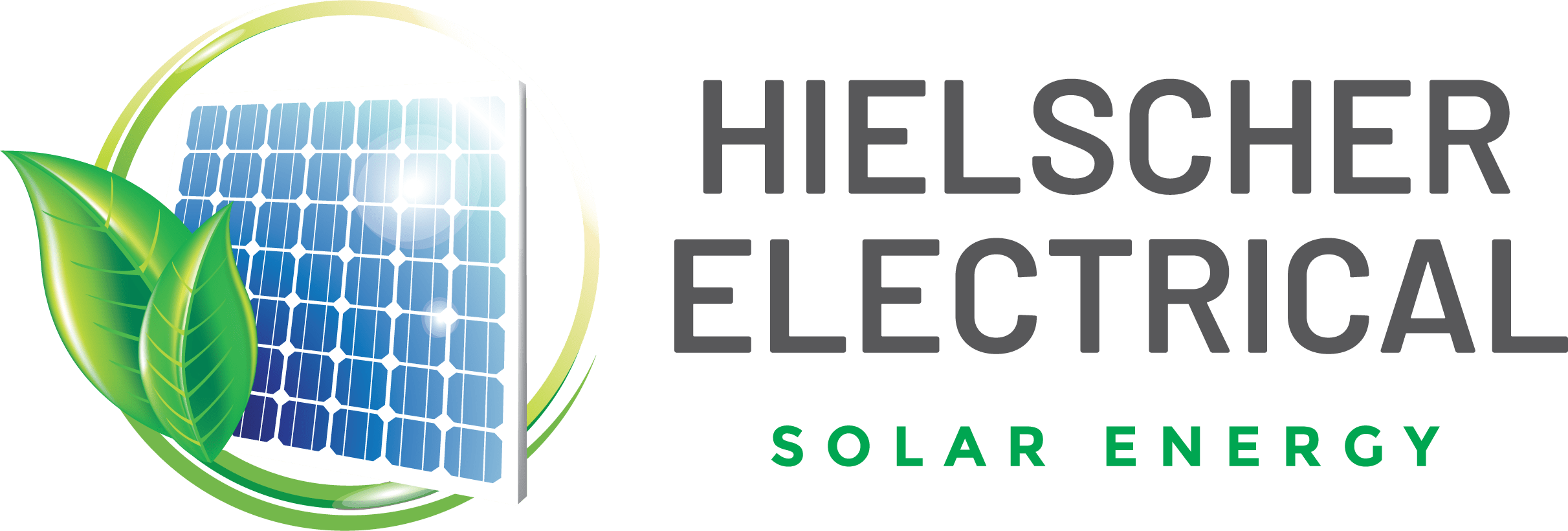
SolarEdge Technologies is ranked among the fastest growing and most innovative solar inverter producers globally, and the third biggest inverter manufacturer in the world after German’s SMA and China’s giant Huawei renowned for electronics.
Headquartered in Israel, SolarEdge Technologies supplies a broad array of inverters for application in commercial, residential and small utility-scale solar PV installations, as well as a variety of optimisers and energy battery storage solutions.
Incepted in 2006, SolarEdge stands tall as a distinct Inverter supplier given they manufacture the more ‘intelligent inverter systems’ that give the ordinary string solar inverters a run for their money. The company’s ‘intelligent inverter systems’ rely on power optimisers to maximise energy generation of each panel in the series.
With over 2 million rooftop solar installations, Australia has become one of the leading markets for SolarEdge’s inverter systems that have grown in popularity among consumers and installers who truly understand the unique benefits of having a single panel level monitoring system to troubleshoot and prevent imminent faults and performance problems.
Regardless of the high upfront costs, many Australian installers are focusing on making the most of the optimised systems which can also deliver higher levels of flexibility in layouts besides guaranteeing a higher energy generation over the system’s life.
How the SolarEdge System Works
Conventional string solar inverters are wired to convert DC energy to AC via one or more panel strings based on how many panels are in the array and other factors that dictate the broad range of operational voltages.
The string inverters are designed to track the system’s voltage and convert the DC power to AC at the highest power level of the string. This works effectively except on overcast days, when the cells are dirty, shaded or one or more panels are faulty—all which reduce the ability for the string to generate more power.
On the other hand, SolarEdge Inverters are designed to run at a given voltage level and they achieve this through power optimiser fixed to each panel to supply maximum voltage for optimal power generation.
When a solar panel is shaded or under-performing hence delivering low current or voltage, the remaining optimiser can still bypass and/or compensate for the ineffective panel to deliver optimum current to the solar inverter.
In other words, SolarEdge optimisers are essentially DC to DC converters that work in tandem to provide the inverter with the much needed optimal string voltage for maximum power generation.
While there are a couple of limitations to SolarEdge’s system, for instance, when several solar panels are shaded or under performing, the optimisers can only compensate as much as they can (keeping in mind that they have a limited range) before the entire system’s performance is slowed down.
It’s crucial that I mention the fact that power optimisers can’t produce additional electricity during poor weather or when the solar panels are dirty.
SolarEdge Power Optimisers
When combined with micro-inverters, optimisers are referred to in the industry as Module Level Power Electronics (MLPE), and as the name suggests, they consist of electronic power conversion units that connect directly to each solar panel in the array.
MLPE comes with a range of benefits such as solar panel level monitoring which provides real-time power generation data from individual panels in the solar range. With this technology, under-performing solar panels can be detected easily and fixed.
Given the huge variety of different solar panels offered on the global market with power ratings ranging from 250 to 450 Watts and differing operating voltages, SolarEdge has created several optimisers designed uniquely for different kinds of solar panels and their installation.
Various solar panel manufacturers around the world supply their panels with built-in SolarEdge Optimisers meaning the installation becomes simpler and innovative. Jinko solar, LG Energy, Canadian solar and JA solar deliver solar panels embedded with SolarEdge optimisers.
Range of Inverters
Compact HD wave inverter from SolarEdge
As earlier stated, SolarEdge manufactures a variety of both residential and commercial inverters used for different applications. The advanced compact HD wave—a residential inverter features advanced, excellent quality, long-lasting components like silicon switches and ceramic thin-film capacitors.
Residential Inverter Range
- Single phase ranges from 2.5 to 6.0kW – HD wave
- Single phase ranges between 8.0 and 10.0kW (coming soon)
- 3-phase range starting from 5.0 to 8.0kW (New)
- StorEdge Hybrid inverter ranging between 5.0 and 6.0 kW
- StorEdge battery interface
Commercial Inverter Range
- 3-phase ranging from 10kW to 27.6kW
- 3-phase range ranging from 50kW to 100kW (AU coming soon)
Battery storage – StorEdge Hybrid Inverter
SolarEdge’s residential hybrid inverters referred to as ‘StorEdge’ are compatible with the LG Chem RESUH (considered high voltage) storage batteries offered in two sizes—the RESU7H battery with a capacity of 6.5kWh and the RESU10H with a usable capacity of 9.3kWh.
Due to the high demand for the battery, LG Chem has been working hand in hand with SolarEdge to offer an add-on junction/combiner box designed to allow a 2 x RESUH storage batteries to be attached for a higher energy storage capacity of up to 18.6kWh.
The StorEdge inverter currently offered in two sizes, 5kW and 6kW is an all-inclusive hybrid inverter innovatively designed for optimal solar usage via load shifting (read self-use) and can deliver back-up energy to the most crucial circuits in case of a power outage.
For non-back up storage battery installations, the LG RESUH battery size range can be combined with the HD Wave Inverter for effective performance using the StorEdge battery interface.
Benefits of Optimises
Shading is one of the main problems with ordinary string inverters and rooftop solar panel installations. However, once an optimised system is installed, in the event that a panel or more are fully or partly shaded, the optimisers will bypass or even compensate for the shaded panel(s) without interfering with the overall output of the rest of the panels in the string.
Apart from shading, there are other reasons why individual solar panels or strings underperform or record reduced performance. Small issues can grow into serious problems with time as the solar PV panels age and create hotspots as a result of individual cell’s degradation at varied rates.
The different degradation rates of solar panels (usually 1-2% in year 1 and 0.4% in each subsequent year) can lead to a 5-6% mismatch over the system’s life.
The main factors that lead to slowed system performance of existing or newly installed solar systems include:
- Shading – By trees, buildings, rooftop structures, wires, poles, antennas
- Solar Panel mismatch – due to manufacturing tolerances
- Damaged Panels – by hotspots, micro-cracking or water ingress
- Temperature differences – caused by thermal variance at different times of the day
- Soiling – As a result of accumulated dust, snow, birds or bird droppings
- PID issues– Caused by possible current and voltage leakages
Potential Induced Degradation (PID) problems can be difficult to detect without employing specialised equipment but thanks to the support of individual solar panel level monitoring, the SolarEdge system comes in handy to make it easier to detect PID issues as they crop up.
Added Optimizer Benefits
The SolarEdge system comes with added benefits for solar PV panel installers in terms of flexible design layouts as shown below. One of the most important benefits arises when it’s time to replace faulty or existing panels later in future, as it becomes a challenge finding the exact size or model panels, but the SolarEdge optimisers overcome this hurdle by their ability to perform with multiple solar panel sizes and models on a given string.
For instance, a user can replace an existing 260W solar panel which no longer exists on the market with a newer 285W panel with each solar panel performing at optimal power point.
Additional benefits of SolarEdge Optimisers
- Ability to maximise rooftop space—reduced shading issue especially in winter and overcast days
- Multiple orientations on one given string
- Several solar panels on one string – best for upgrading old, under performing systems
- Ability to install parallel strings of different lengths
- Monitoring happens at the individual inverter, string and panel level
- Using monitoring portal for remote troubleshooting
Safety Benefits
Besides the above listed benefits for individual panel level monitoring and optimisation, SolarEdge optimisers also provide incredible advantage of safety by minimising the voltage in the DC cable to 1 volt per panel in the array in the event that the inverter or grid experience a power cut.
The ordinary strings of solar PV panels are considered very dangerous especially during daylight when the DC voltage ranges between 300-600 volts which can become lethal in case of a fire emergency.
When high DC string volts combine with faulty connectors and isolators, water ingress and/or corrosion, an arc fault is created that can cause severe damage to the solar panels or even result in rooftop fire. SolarEdge inverters are also designed with built-in fault detection (UL1699B) that helps to mitigate the possibility of arcing.
Enhanced safety-During the panel installation and commissioning, just before the inverter is finally switched on, the voltage is decreased to a safe level where the DC string voltage corresponds to the total number of panels in the array or string. For example, 12 panels = 12 volts DC.
The Downside of Power Optimisers
Increased system cost—Successful installation of a new optimiser requires several components including additional cables and connection points. This high number of connection points increases the complexity of setup and chances of having more failure points especially if the connectors are not properly utilised.
All in all, SolarEdge and most solar installers argue that the advantages of panel level monitoring, power optimisation and added DC safety far outweigh the complexity and additional installation cost.
When individual power electronics are attached to each panel, there are high chances of enhanced failures and technical issues in future given that the optimisers are mounted on the rooftop with extreme weather conditions like humidity and high temperatures.
Homes or buildings near the seaside also experience salt or mist corrosion and hence not ideal for roof mounted electronic systems. But the rate of failure is low as reported by SolarEdge and notable Australian installers we contacted.
Given the additional benefits of individual panel monitoring, any arising problems can be detected immediately by SolarEdge which monitors all systems anywhere that are connected to its network. This also assures consumers that any warranty issues can be quickly resolved.
Challenges with Smaller Panel Systems
Usually, the SolarEdge residential inverters are wired to function at 350V DC (and 380V for the HD wave) while the optimisers come with a limited current range of 60V to a maximum of 85V for P505 when a minimum size of a string of 6 to 7 modules is used.
Smaller sized systems facing severe shading problems perform very poorly. If most of the modules become shaded, the system’s voltage gets drawn out from the inverters voltage range leading to poor system performance. As such, installations affected by excessive shading are not ideal for smaller-sized systems with less than 8 panels.
This also causes problems for small-sized systems that experience multiple orientations. For instance, a roof split with one side facing North and another West where the modules on the West are shaded during morning hours can reduce the efficiency of the North modules hence leading to poor performance.
To minimise issues related with shading and shorter strings, the SolarEdge P404 and P505 optimisers are designed with higher volts range and come in handy when creating layouts for complex installations.
Given the added skill required to install the complex system, solar installers using SolarEdge products must be certified and well-trained by SolarEdge so as to ensure the system performs optimally.
SolarEdge design Tools
SolarEdge has a wide range of free tools that designers and installers can use to design and configure SolarEdge systems. The company’s online designer also helps consumers to correctly use their inverters and optimisers and that they are compatible with the chosen solar modules.
Warranty
SolarEdge’s power optimisers come with a 25-year warranty and an industry-best 12-year warranty on all inverters backed by an optional extension of 20-25 years. Normally, a warranty becomes useful as long as the company is in existence. In this case, SolarEdge is working hard to be there in your system’s future.
In Conclusion
SolarEdge optimisers and inverters enhance performance slightly above the ordinary string inverters but most importantly SolarEdge’s systems offer great benefits of individual panel power monitoring and optimisation.
Optimisers ensure more flexibility in panel design and layouts particular in the event of shading and complex rooftops. In such a case, optimisers enable the addition of solar to sites that would otherwise record very poor performance hence unsuitable for use with string inverters. However, tiny systems that use less than 7 modules, and affected by shading are usually not compatible with the SolarEdge system.
Even though the installation cost and setup time of SolarEdge optimisers is slightly higher than those of string inverter systems, the plethora of benefits such as layout flexibility, shade tolerance, faster system troubleshooting, PID detection, easy replacement of faulty panels, simple warranty claims process and individual panel level monitoring and optimisation within the system’s 25+ year lifespan makes its installation easier for both customers and installers.
The low failure rate, 12-year inverter warranty and 25-year optimiser warranty give us a clear overview of why SolarEdge optimised systems are growing in popularity all across the globe.
Last modified: 21 October 2023



